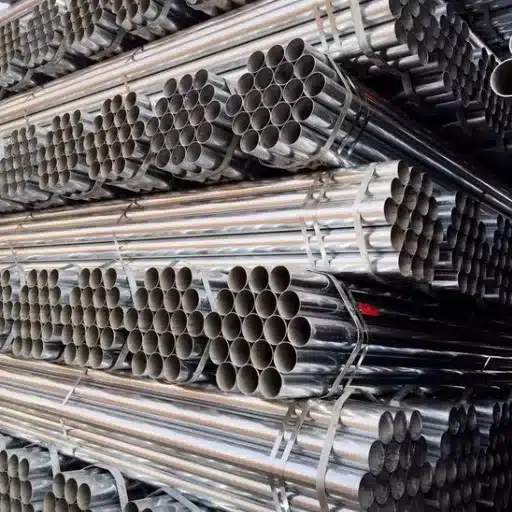It is no secret that not all grades of stainless steel are the same. Perhaps the most quintessentially used in cookware and construction, respectively, 316 and 304 are two of the most commonly used types. The one question most people have is, Why is there such a price difference? Is the cost of 316 stainless steel justified, or does 304 hold its own as a cheaper alternative? We will explore the differences in composition, durability, applications, and grade of these two types of stainless steel. This guide will help an engineer, a manufacturer, and even a consumer gauge the need for 316 and decide if its features merit the premium over 304. Keep reading as we delve deeper into the intricacies of stainless steel to help you make a smart purchase.
What Are The Key Differences Between 304 And 316 Stainless Steel?
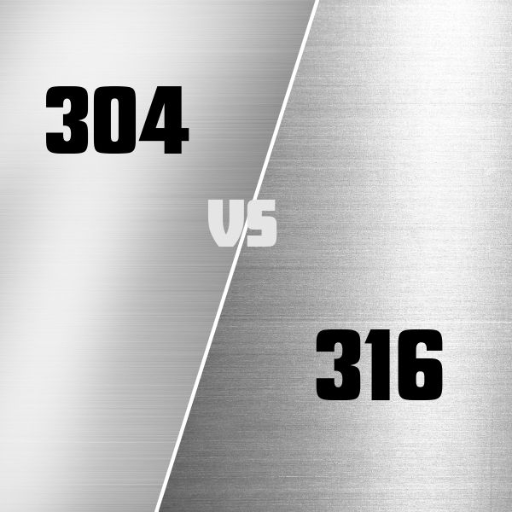
The key distinction between 304 VS 316 stainless steel is their chemical composition and the degree to which they can withstand corrosion.
Composition: The difference between 316 and 304 stainless steel is that the former contains molybdenum. This improves its resistance to destruction by corrosion, especially from chlorides and harsh chemicals.
Corrosion Resistance: 316 is superior to 304 in relation to exposure to saltwater, acids, and other corrosive substances. It is, thus, best suited for use in marine and chemical applications.
Cost: Due to the added molybdenum in 316 stainless steel, it is, therefore, more costly than 304 due to its added resistance.
Applications: 316 is preferred in harsh environments like marine and medical needs, while 304 is used in less demanding general-purpose applications, including kitchen equipment and automotive parts.
The two are suited for different purposes, based on the required level of durability and environmental resistance.
Chemical Composition: The Addition Of Molybdenum In 316
One of the defining characteristics of 316 stainless steel is the addition of molybdenum, which is usually included at a variable amount of approximately 2–3%. This addition greatly improves its resistance to corrosion, especially in the presence of chlorides or other more severe chemicals. For example, 316 stainless steel withstands the exposure of saltwater and other chemicals that would cause both pitting and crevice corrosion to 304 stainless steel.
Compared to 304, which does not contain molybdenum, 316 shows better performance, retaining structural strength under more extreme conditions. Furthermore, the inclusion of molybdenum increases the strength of the material at high temperatures, which increases the applicability of 316 stainless steel in marine, pharmaceutical, and chemical industries engineering. This improvement greatly warrants the use of 316 stainless steel in more extreme environments.
Corrosion Resistance: How 316 Offers Superior Protection
Stainless steel Type 316 is a material that provides outstanding resistance to corrosion in highly acidic and chloride-rich environments like seawater. Its resistance to pitting and crevice corrosion due to additional molybdenum is superior compared to 304 stainless steel. For example, 316 steel is better suited than 304 for marine and coastal applications because it has a much greater endurance to salt spray corrosion.
Food and pharmaceutical industries maintain stringent sanitary conditions on their production lines, for which 316 stainless steel is preferred as it contaminates sensitive processes whilst withstanding chemical pollutants. With a Pitting Resistance Equivalent Number (PREN) greater than 25, quite a number of other 316 stainless steel grades are outperformed, guaranteeing long-term performance and durability across a wide range of challenging conditions.
Physical Properties: Comparing Strength And Durability
316 stainless steel also has properties that stand out when comparing the strength and toughness of various steel materials. 316 stainless steel has a tensile strength of approximately 579 MPa (84 KSI) and a yield strength of approximately 290 MPa (42 KSI), indicating that 316 stainless steel is fit for many applications in which both structural integrity and solid resistance to deformation are required. Additionally, its elongation at break is approximately 40%, making it flexible yet prone to fracturing.
The aforementioned alloy has great performance under varying temperatures and retains its strength and toughness, performing well under cryogenic conditions as well as high temperatures up to 870°C (1600°F) with intermittent use, 815°C (1500°F) for continuous use, and 815°C (1500°F) for continuous use. The addition of molybdenum improves its resistance to pitting and crevice corrosion, particularly in chloride-rich environments, which further enhances its properties.
316 stainless steel stands out in other areas as well, particularly hardness, where its Brinell Hardness number (BHN) is observed at around 217. A mixture of high toughness, solid elongation, and reasonable hardness further improves the reputation of this alloy in sustaining extreme conditions. Subsequently, it is widely used in the marine construction industry, during oil and gas drilling, and in chemical processing, where durability against physical and chemical stress is critical.
Why Does 316 Stainless Steel Cost More Than 304?
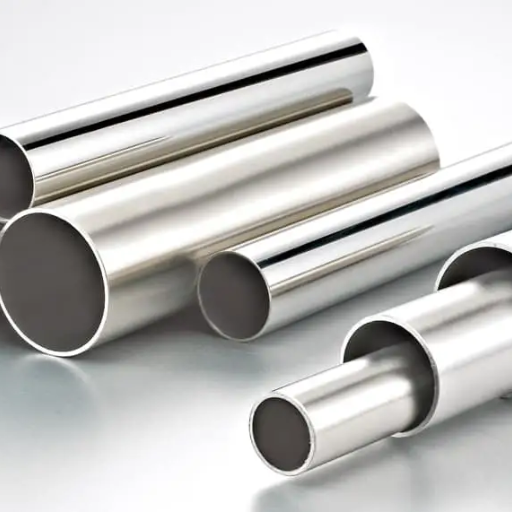
As a result of its composition, 316 stainless steel is more expensive than 304 due to its greater resistance to corrosion and its composition, which contains a higher percentage of molybdenum. Molybdenum is important for alloys as it improves resistance to pitting and crevice corrosion in chloride-rich conditions. This corrosion resistance improves durability,y which makes 316 more often used in harsh environments. This explains the price difference with 304.
The Impact Of Molybdenum On Manufacturing Expenses
Molybdenum is vital in determining stainless steel costs, especially for 316 grade, due to its unique properties like enhanced corrosion resistance and mechanical strength at elevated temperatures. Because of the challenges in extraction and limited availability, molybdenum is considered a high-value material.
Molybdenum’s price still fluctuates with mining output, geopolitical conditions in the rest of the world, and growing needs in the energy and construction fields. Recently, the price for molybdenum oxide, one of the most used in alloys, was between $20 to $30 per pound, which demonstrates great volatility.
The cost dynamics of steel directly affect the production of molybdenum-containing 316 stainless steel, as it incurs higher raw material costs. This is especially true compared to stainless steel 304, which does not have molybdenum in its ingredients. Chemical processing and marine industries heavily depend on steel, so they often accept the higher 316 manufacturing cost due to its superior performance and much lower lifecycle costs. Thus, molybdenum remains one of the most critical composition elements, despite being costly, for stainless steel manufacturers.
Supply And Demand Factors Affecting 316 Stainless Steel Prices
The complex relationship between the price of 316 stainless steel and the balance of supply and demand in international markets is influenced by multiple factors. First, consider the global supply of nickel and molybdenum, which, as earlier discussed, are crucial constituents in 316 stainless steel. Consider, for example, nickel: currently trading for $20,000 per metric ton, its value posesa great risk to business steel makers. Molybdenum is often traded for more than $40,000 per metric ton, and therefore contributes to increasing cost volatility. These reasons demonstrate why market prices fluctuate so frequently.
In the construction, automotive, and marine industries, demand for 316 stainless steel is driven heavily by the fact that the material is corrosion resistant, which makes it durable. Renewed interest in the chemical processes and infrastructure devoted to renewable energy also serves the purpose of fueling demand. The marine sector is, for example, one of the largest consumers and continues to transition to materials that are best suited for hostile environments and have a longer lifecycle.
Global trading policies, tariffs, and international conflicts all have an impact as well. For example, stringent export controls in significant production nations or abrupt hikes in import tariff quotas might worsen the supply constraints, thereby pushing prices higher. These factors may relieve demand pressure and potentially decrease costs as a result of reduced industrial activity or increased recycling of stainless steel by manufacturers. These complex relationships associated with the 316 stainless steel are important for participants of the market to devise efficient purchasing plans in an economically intelligent manner.
Production Process Differences That Increase Cost
The cost differences in the production processes for 316 stainless steel stem from the added alloying elements of molybdenum and nickel. These metals are costly and are further difficult to maintain during production. Moreover, the steps taken to guarantee the material’s strength, resistance to corrosion, as well as its general quality necessitate sophisticated methods and machinery for further refining, which increases the total production cost.
When Is 316 Stainless Steel Worth The Extra Cost Over 304?
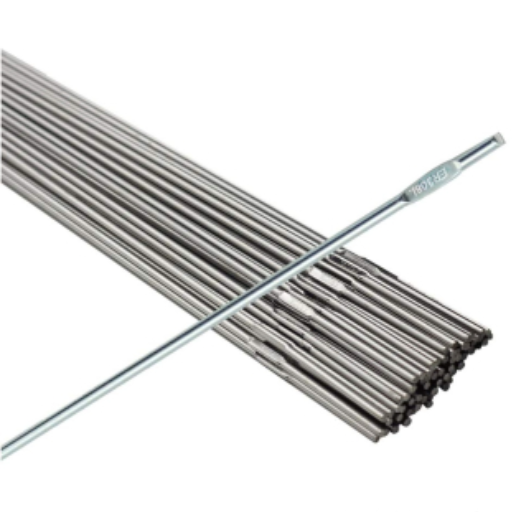
This type of steel is more costly than 304 grades as it is more beneficial in particular settings where exposure to chlorides, saltwater, or violent chemicals is present. It is much more effective in resisting pitting and crevice corrosion, which is greatly needed in marine environments, chemical processing industries, and everywhere else that requires high durability. Other than that, if your project has higher specifications for heat resistance and extreme cleanliness, like in medical or food processing, it is much wiser to invest in 316 stainless steel. The value it offers in terms of performance and reliability over time simply is too much to overlook.
Marine Environments: Why 316 Excels In Saltwater Applications
- Resistance to Chloride-Induced Corrosion
-
-
- Most metals are at risk of being corroded by chloride ions found in saltwater. Due to the higher content of molybdenum (2-3%) in 316 stainless steel, it has far greater resistance to pitting and crevice corrosion. This makes it an outstanding stainless steel for marine equipment and structures.
-
- Tensile Strength
-
-
- In the case of 316 stainless steel, it offers a tensile strength of about 515 MPa, which allows it to endure highly stressed environments while being intact during the constant movement of the ocean.
-
- Longevity in High-Humidity Conditions
-
-
-
Marine environments are humid by nature which fosters, standard materials, degradation. Rust-resistant 316 stainless steel maintains its sleek appearance and structural strength when expose to the elements for decades.
-
-
- Thermal Resistance
-
-
- Mechanical characteristics of this alloy remain stable within the range of -150°F to 1500°F (-101°C to 815°C). This enables its use in components subjected to harsh marine temperature changes.
-
- Applications in Shipbuilding and Offshore Construction
-
-
- Its reliability when used in propellers, cables, and deck fittings, coupled with its durability, reduces maintenance costs and makes it an ideal material in these areas.
-
- Data on Endurance
-
-
- Tests suggest that 316 stainless steel alloy performs well in environments with up to 4% salt concentration, and 304 stainless steel suffers more than competitively in long-term exposure tests.
-
- Ease of Maintenance
-
-
-
Corrosive elements do not hinder the performance of 316 stainless steel, even with harsh exposure, it requires minimal maintenance,e which is essential for offshore platforms and marine vessels where access is difficult.
-
-
Comprehending these characteristics explains why 316 stainless steel continues to be among the best options in the marine industry. Its superior resistance to harsh environments guarantees reliability and endurance in critical applications.
Chemical Processing: When Excellent Corrosion Resistance Is Critical
Being involved in the processing of chemicals or products often leads to contact with extremely corrosive materials such as acids, alkalis, and highly corrosive chlorides. For such applications, 316 stainless steel is often selected because it withstands these corrosive elements unusually well. Its constitution, which contains 16 – 18% chromium, 10 – 14% nickel, and 2 – 3% molybdenum, boosts its resistance against pitting or crevice corrosion, especially in the presence of chlorides.
For instance, in industries where sulfuric or hydrochloric acid is processed, 316 stainless steel withstands the risks of extreme stress reliably. Withstanding chemical wear and high temperature makes it inevitable for storage tanks, reaction vessels, and heat exchangers. Research has proved that under a highly perceived chloride environment, 316 stainless steel can resist corrosion and maintain structural integrity up to approximately 120 degrees Fahrenheit (49 degrees Celsius) and higher in less aggressive environments.
Additionally, the smooth passivated surface of 316 stainless steel eliminates the problem of material buildup up which is essential in chemical processes, especially those aimed at purity, as it leads to contamination. Its cleanliness and low adhesion to particles make it greatly sought after in extremely hygienic procedures. It is ideal for chemical processing plants, which require safety and durability, and reduces long-term costs due to its offensive qualities.
Medical And Food Grade Applications: Safety Considerations
The distinctive use of 316 stainless steel in medical and food-grade applications is due to its hygiene and safety properties. This alloy undergoes minimal corrosion even in chemical or salt environments. Studies confirm that molybdenum is pitted or crevice-corroded and greatly enhances durability.
The medical industry uses 316 stainless steel in highly biocompatible surgical instruments, implants, and other sensitive equipment because it doesn’t react with human tissue. It is also able to withstand very high temperatures, making autoclaving possible and ensuring microbial contamination-free equipment.
Like the medical industry, food processing also uses this material for their tanks, mixers, storage equipment, and pipe systems. Additionally, its smooth surface minimizes bacterial adhesion and biofilm formation known factors that spread food contamination. It cuts downtime during cleaning cycles, helping compliance with NSF/ANSI safety standards.
These characteristics allow 316 stainless steel to excel in applications that require extreme precision, cleanliness, and safety.
Can 304 Stainless Steel Be Used Instead Of 316 To Save Money?
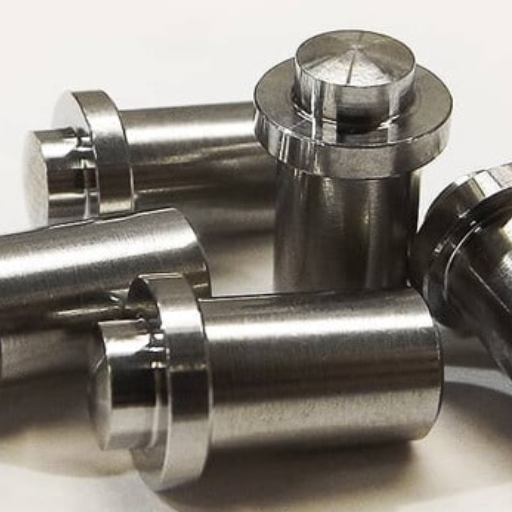
Indeed, 304 Stainless Steel can sometimes be used instead of 316 if one is trying to cut costs, but it is case-specific. Although 304 is relatively cheaper and has superb corrosion resistance in many situations, it fails to withstand highly corrosive environments and places with saltwater exposure or the presence of chlorides. If the use case does not require any of the harsh conditions mentioned previously, 304 may provide a good economical option.
Suitable Applications For 304 Stainless Steel
The use of 304 stainless steel encompasses many applications across various industries due to its corrosion resistance, durability, low cost, and value. Its use in household items, such as kitchen sinks, cutlery, and cookware, showcases its ability to withstand food acids while still maintaining a shiny finish. Also, 304 stainless steel is often used in construction and building for architectural paneling, handrails, and even chemical storage tanks because it can endure the outdoors and indoor environments without significant corrosion.
One other notable application is in the medical field because 304 stainless steel is somehow hygienic enough for surgical instruments and medical devices. Material engineering data suggests 304 stainless steel can withstand up to approximately 1,700 °F (927 °C) before any sign of oxidation starts, making it dependable for high-temperature environments like food processing equipment and industrial machines. It’s also used in the automotive and transportation industries for parts like the exhaust system due to its ability to withstand high heat and corrosive substances.
As with any other type of stainless steel, there are advantages and disadvantages that must be balanced in relation to environmental conditions, performance requirements, and budget limitations for 304 stainless steel. In more general-purpose applications, 304 stainless steel can actually be one of the most widely utilized materials.
Risk Assessment: When Substituting 304 For 316 Is Dangerous
Though 304 stainless steel is adaptable, using it instead of 316 stainless steel poses significant risks in certain situations because of the differences in chemical composition and how they perform in corrosive environments. One major difference is the addition of molybdenum in 316 stainless steel, which increases the resistance to pitting and crevice corrosion to further increasing in chloride-laden environments like marine applications or chemical processing plants.
For example, studies have shown that 304 stainless steel is prone to stress corrosion cracking in moderately hot and salt-laden atmospheres, while 316 stainless steel remains stable and strong in these conditions. The chloride threshold for 304 stainless steel to commence corrosion is at around 200 parts per million (ppm), whereas 316 stainless steel has a much higher resistance threshold of about 1,000 ppm. This makes 316 a better option for applications in industries where contact with seawater, de-icing salt, or other highly corrosive materials is inevitable.
Another important consideration is temperature. If the operating environment involves high temperatures with chlorides, 304 could suffer the loss of mechanical strength. For instance, 316 stainless steel performs better over the long term in industrial heat exchangers and coastal heat-resisting equipment because 316 stainless steel retains strength and resists oxidation at elevated temperatures.
In general, replacing 316 with 304 stainless steel without accounting for environmental conditions, the life of the material, and safety standards might result in costly repairs, operational failures, or exceeding the expected lifetime of the system. For optimal material selection strategies, it is critical to understand the requirements of every application.
How Much More Expensive Is 316 Compared To 304 Stainless Steel?
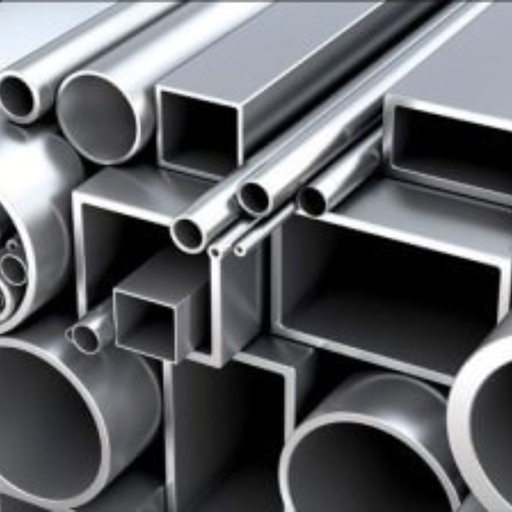
The price of 316 stainless steel is usually 20-30% more than that of 304 stainless steel. This is because 316 has a higher content of nickel and includes molybdenum, which improves its resistance to corrosion as well as its durability, particularly in extreme environments. Actual prices may fluctuate depending on market conditions and the vendor.
Market Price Comparison: Average Cost Differences
The cost variation between 316 and 304 stainless steel usually does not exceed 20-30%. This variation is subject to changes in market conditions, cost of raw materials, and the vendor I decide to work with. If the application requires increased strength and corrosion resistance, then selecting 316 is a prudent choice.
Long-Term Value: Maintenance And Replacement Considerations
Considering long-term value, the maintenance and replacement cost strategies start with selecting an appropriate grade of stainless steel. With its greater resistance to corrosion, particularly with attacking chlorides and severe environments, Grade 316 stainless steel undergoes less frequent repairs or part replacements. On the contrary, 304 steel, while offering strong durability for less demanding conditions, is exposed to relatively high salt concentration and certain chemicals, increasing maintenance needs over time.
As an example, in industrial applications like oil and gas, where components are frequently exposed to saltwater or more corrosive chemicals, the 316 stainless steel can extend the lifespan of components by up to 50% compared to 304 stainless steel. Even though grade 316 may require about 20-30% more in initial costs, the reduced damage and increased reliability greatly justify the investment. Additionally, this can lead to savings by lowering repair needs and reducing operational downtime, thus making it a valuable option for critical environments.
What Are The Performance Differences Between 304 And 316 In Extreme Conditions?
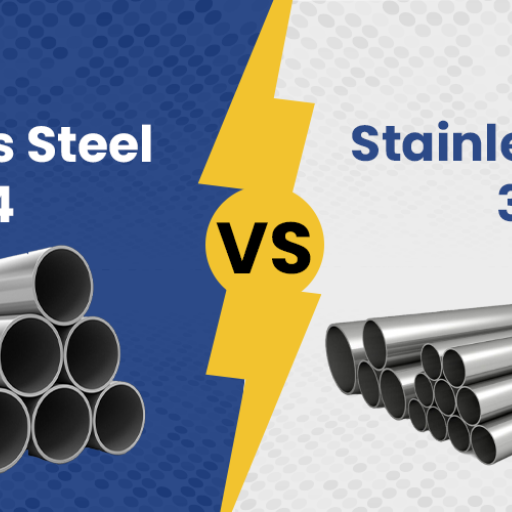
Grade 304 is best for general use cases, while grade 316 is best in extreme marine or industrial settings. Grade 316 also outperforms grade 304 in places that are corrosive, humid, or hot. The addition of molybdenum in 316 makes it withstand pitting and crevice corrosion better than 304. Grade 304 lacks this molybdenum and will therefore corrode over time in humid or hot conditions. Both grades perform well in extremely cold conditions; however, 316 outperforms in subjects to high heat and caustic substances.
Temperature Resistance: How Each Grade Performs Under Heat
In regard of temperature resistance, 316 stainless steel has better performance when high-temperature corrosive environments are factored in, since 304 stainless steel loses its structural integrity at high temperatures. Industry records suggest that 304 stainless steel recommended usage limit is around 870°C (1598°F) for continuous usage and 925°C (1697°F) for intermittent usage. On the other hand, 316 maintains its impressive resistance up to 930°C (1706°F) for continuous applications and 980°C (1796°F) for intermittent applications.
Primarily, the distinct edge of 316 stainless steel lies in its oxidation resistance and high-temperature deformation, making it a favorable selection in conditions where high temperatures are paired with exposure to acids, chlorides, or other dangerous chemicals. This expands its industrial applications for furnaces, heat exchangers, and other equipment exposed to extreme temperatures and harsh environments. Furthermore, molybdenum addition also increases the thermal stability of 316, ensuring maintenance-free service for extended periods under harsh operating conditions. This guide helps with material selection in precise, consistent applications in extreme heat environments.
Chloride Environments: Why 316 Is The Better Choice
316 stainless steel is exemplary in environments rich in chlorides due to its increased resistance to corrosion, particularly pitting and crevice corrosion. This advantage is primarily ascribed to its molybdenum content, which varies from 2% to 3%. Studies suggest 316 stainless steel can tolerate chloride concentration levels of up to 1,000 ppm without considerable deterioration, hence supporting its use in marine environments, chemical processing plants, and desalination facilities.
Compared to 316, 304 stainless steel is also durable but would suffer localized corrosion at chloride concentrations substantially lower than 316. For instance, seawater-drenched environments, which have approximately 19,000 ppm of chloride, prove to be extremely detrimental for most materials. For 316, its robust composition, which includes nickel and molybdenum, forms an oxide layer that protects against chloride ion penetration, making it erode resistant.
These traits render 316 stainless steel particularly useful in manufacturing components such as oil rigs, pipelines, and coastal architectural structures. In designing for environments with high exposure to chlorides, 316 becomes not just a better option, but often a decisive choice for safety, longevity, and cost-effectiveness.
Industrial Applications: Real-World Performance Comparisons
316 stainless steel is widely used across various industries because it exhibits durability and corrosion resistance. For example, in the marine industry, 316 is frequently utilized for shipbuilding components, such as fasteners and hulls, because of its resistance to saltwater during prolonged periods of time. Furthermore, it has been proven that 316 stainless steel withstands many other alloys under the same conditions due to its significantly lower corrosion rates in comparison to standard grades like 304.
Moreover, 316 provides unparalleled superiority with regard to pitting resistance and stress corrosion cracking in harsh and acidic chemical processing plants. It has been tested in sulfuric acid solutions against many competing materials, which demonstrates patience in maintaining structural integrity, thus extending better returns on investment. Moreover, in the food and beverage industry, 316 grades of stainless steel ensure absolute cleanliness because of its non-penetrable nature against food acids and cleaning agents over time, making it ideal for processing machinery and storage tanks.
Such attributes not only reduce maintenance work but also enhance the lifespan of the equipment, which is the reason why 316 stainless steel is still widely used in high-performance, high-risk environments.
Reference Sources
- Comparative Study of Pulsed Nd: YAG Laser Welding of AISI 304 and AISI 316 Stainless Steels2:
- Key Findings: The study revealed that 304 stainless steel (SS) welds exhibited better mechanical properties compared to 316 SS under similar conditions. The research highlighted the influence of base metal composition and heat input on microstructural and mechanical properties.
- Methodology: Used response surface methodology (RSM) to optimize laser welding parameters and conducted metallurgical and mechanical analyses to evaluate weld quality.
- Comparison of 304 and 316 Stainless Steel Microbiologically Influenced Corrosion (MIC)4:
- Key Findings: 316 SS demonstrated significantly higher resistance to MIC compared to 304 SS, attributed to its higher molybdenum content. The study quantified corrosion resistance using electrochemical methods.
- Methodology: Evaluated corrosion resistance through linear polarization resistance (LPR) and potentiodynamic polarization (PDP) tests in an anaerobic oilfield biofilm environment.
- An Adaptive Design for Cost, Quality, and Productivity-Oriented Sustainable Machining of Stainless Steel 3165:
- Key Findings: The study developed an adaptive design approach to optimize machining processes for 316 SS, balancing cost, quality, and productivity. It emphasized the importance of cooling strategies and cutting speeds.
- Methodology: Utilized support vector regression models and particle swarm optimization to analyze machining parameters.
Frequently Asked Questions (FAQs)
Q: What is the main difference between 304 vs 316 stainless steel?
A: The main difference between 304 and 316 stainless steel is their chemical composition. While both are austenitic stainless steel grades, 316 contains 2-3% molybdenum, which 304 lacks. This addition gives 316 better corrosion resistance, particularly against chlorides and salt environments. The presence of molybdenum is what makes 316 more expensive than 304 stainless steel while providing enhanced durability in harsh conditions.
Q: What are the properties of 304 stainless steel?
A: 304 stainless steel is an alloy characterized by excellent corrosion resistance, good formability, and weldability. It typically contains 18-20% chromium and 8-10.5% nickel. 304 steel offers good resistance to oxidation, is non-magnetic when annealed, and maintains its mechanical properties in a wide temperature range. It has good strength and corrosion resistance in general atmospheric conditions, making it one of the most widely used types of stainless steel for everyday applications.
Q: What are the properties of 316 stainless steel that make it more expensive?
A: 316 stainless steel is more expensive primarily because it contains 2-3% molybdenum, an expensive alloying element. This addition gives 316 superior properties, including enhanced resistance to pitting corrosion, excellent resistance to chlorides and salt environments, better performance in marine applications, higher strength at elevated temperatures, and superior resistance to chemical attack. These improved properties make it more suitable for harsh environments where 304 stainless steel would deteriorate more quickly.
Q: What is the typical price difference between 316 and 304 stainless steel?
A: The price of 304 stainless steel is generally 20-30% lower than 316 stainless steel. This price difference varies depending on market conditions, quantity purchased, and the specific form of the material (sheet, tube, bar, etc.). The higher cost of 316 is directly related to the addition of molybdenum, which is a relatively expensive alloying element. For large projects, this price difference can represent substantial cost implications, making material selection an important economic consideration.
Q: What are the common applications of 304 stainless steel?
A: 304 stainless steel is widely used in various applications, including kitchen equipment, food processing equipment, architectural trim, chemical containers, heat exchangers, brewing equipment, dairy equipment, general household items, interior architectural applications, automotive trim, and general-purpose equipment where moderate corrosion resistance is needed. Its versatility and good balance of properties at a reasonable cost make it the most commonly specified grade of stainless steel, accounting for more than 50% of stainless steel used worldwide.
Q: When is using 316 stainless steel worth the extra cost over 304?
A: Using 316 stainless steel over 304 is worth the extra cost in environments with exposure to chlorides, salt water, or marine atmospheres; applications involving chemical processing; outdoor installations in coastal regions; medical implants and surgical equipment; food processing equipment handling high-salt foods; pulp and paper production; and applications involving elevated temperatures with corrosive conditions. In these situations, the superior corrosion resistance of 316 translates to longer service life and reduced maintenance costs, ultimately providing better value despite the higher initial investment.
Q: How does the composition of 304 vs 316 stainless steel affect their performance?
A: The composition difference between 304 and 316 stainless steel significantly impacts their performance. While both contain similar amounts of chromium (18-20%) and nickel (8-12%), 316 contains 2-3% molybdenum that 304 lacks. This addition enhances 316’s resistance to localized corrosion, particularly in chloride environments where 304 would pit or corrode. 316 also tends to have slightly lower carbon content, further improving its corrosion resistance in welded structures. These compositional differences make 316 suitable for more aggressive environments, while 304 is adequate for milder conditions.
Q: How do different grades of stainless steel compare in terms of cost and performance?
A: Different grades of stainless steel offer varying levels of performance at corresponding price points. 304 provides good general-purpose corrosion resistance at a moderate cost, making it the most common grade. 316 offers enhanced corrosion resistance at a 20-30% premium. Lower-cost options include 430 (ferritic) stainless steel, which has reduced corrosion resistance and is approximately 20% cheaper than 304. Premium grades like 317L or duplex stainless steels provide even better performance than 316, but at significantly higher costs. The appropriate grade selection should balance performance requirements with budget constraints, considering the environment and service life expectations.
Q: Is stainless steel a versatile material regardless of grade?
A: Yes, stainless steel is a versatile material across all grades. Each type of stainless steel offers a unique combination of corrosion resistance, strength, formability, and temperature tolerance. While 304 and 316 are the most common austenitic stainless steel grades, there are over 150 different grades available for specific applications. What makes stainless steel particularly versatile is its ability to be formed, welded, and finished in numerous ways while maintaining its inherent corrosion resistance. Whether in construction, food processing, transportation, or medical applications, some grade of stainless steel is likely suitable, making it one of the most adaptable engineering materials available.






